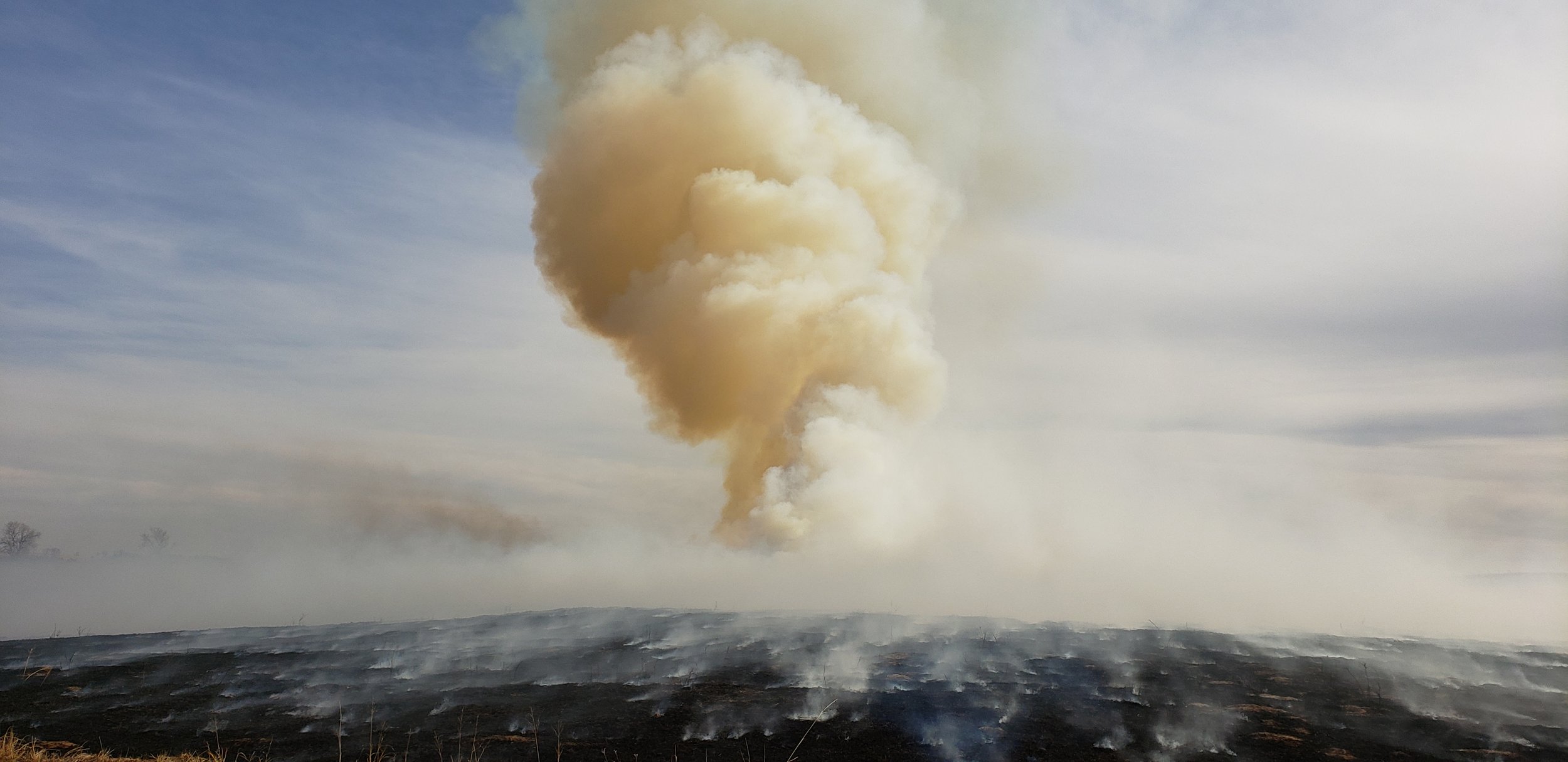Cedars up in Smoke this March
Al and Ev rallied 18 friends and neighbors to conduct a successful prescribed fire on March 27th in their Sandhills prairie pastures in Rock County, NE. They burned 322 acres to kill cedar seedlings in their pasture. In addition to controlling cedar trees, the burn will improve pasture quality for grazing and improve wildlife habitat.
Lighting a test fire to begin a 322 acre Sandhills burn in Rock County in March 2019. Friends, neighbors, fire department volunteers, and agency partners assisted on a safe burn that met its objectives.
Participants gathered in the morning to discuss the plan and line up equipment they had brought. Al led the crew as the Burn Boss. Ev provided a delicious lunch for everyone and took her place on the crew in a pickup with a water tank and hose. The fire started shortly before noon and finished around 5 pm with a dramatic smoke plume. Weather conditions remained within the safe range (in “prescription”) for the amount and type of grass and trees present on the site. The crew monitored wind, humidity, and temperature throughout the day.
Al and Ev had thoroughly planned the burn and prepared over the last year. Tasks included mowing and raking burn boundaries, clearing the mow lines of cottonwood limbs, and filling water tanks. Last summer cattle grazed the area but for fewer days than usual to grow grass fuel for the burn.
Many thanks to the crew that made the burn possible! With their help, the burn was efficient and safe with no major accidents, injuries, or fire escapes. The Bassett and Newport Fire Departments both contributed equipment and a couple of volunteers to the burn. Prescribed fires make great training opportunities for fire departments. Staff of various natural resource conservation groups that support prescribed fire also assisted, including Nebraska Game and Parks Commission (NGPC), Northern Prairies Land Trust, The Nature Conservancy, the Upper Elkhorn NRD, and Pheasants Forever.
In addition to killing cedar seedlings, the landowners and grazing tenant are looking forward to improved pasture quality for cattle grazing and high quality grasslands for wildlife, including the greater prairie-chickens and sharp-tailed grouse we have observed on-site and the American burying beetles observed in surveys nearby. The prairie contains a mosaic of wet and dry sandy soils which should be excellent American burying beetle habitat. Changes in vegetation structure and increased forb diversity and abundance due to the prescribed burn could also benefit loggerhead shrikes, long-billed curlews, monarch butterflies, regal fritillaries, and many other grassland-dependent wildlife species.
The crew puts finishing touches on part of the burn.
A dramatic smoke plume concludes the burn at the end of the day.
The goals of the 322 acre burn: control cedar trees, improve grazing for cattle, and sustain high quality grasslands for wildlife.








